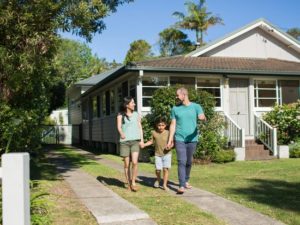Savvy
A breakdown of the incentives available to first homeowners
Purchasing a property has become an increasingly arduous task for many Australians over the past few decades, with the currently booming Brisbane market showing no signs of slowing down. As a result of the pandemic, lowered interest rates, relaxed lending criteria and government incentives have created an increase in buyers that are now able to purchase. Recently reviewed again in the 2021/2022 Federal Budget, there have been further modifications to the eligibility criteria of existing stimulants, as well as new incentives introduced in an effort to assist a wider range of Australians in their quest for home ownership. We have outlined the schemes and their requirements below…
First Homeowners’ Grant
Most Australians are familiar with the national First Homeowners’ Grant, a one-off payment towards buying or building a new (or substantially renovated) house, unit or townhouse. Originally introduced in 2000 to offset the effects of GST, the amount varies from State-to-State, currently offering Queenslanders a payment of $15,000 towards a property up to the value of $750,000. Conditions of the grant require you to move into the home within the first year of ownership, live there for a minimum of six months and exempts you from any stamp duty charges if the property is below $500,000.
First Home Super Saver Scheme
Introduced in 2017, The First Home Super Saver Scheme allows first-time buyers to save money within their superannuation fund by making additional contributions of up to $15,000 per year and $30,000 in total. Tax is still applicable upon withdrawing the funds; however, these super contributions are taxed as low as 15%, with couples able to save individually. To be eligible for the scheme, you must not own any other property and live in the home for at least six months within the first 12 months of ownership.
2021/22 Budget Amendments – Contributions increased from $30,000 to $50,000.
First Home Loan Deposit Scheme/New Home Guarantee
Launched on the 1st of January 2021, the First Home Loan Deposit Scheme was introduced to assist first home buyers in purchasing a property with as little as 5% deposit. The remainder of the deposit required (roughly 15-20%) is guaranteed by the Commonwealth Government, removing the need to take out and pay for mortgage insurance, however you will eventually repay this amount back over time. You must earn a taxable income of less than $125,000 p/annum to be eligible for the scheme (combined $200,000 p/annum for couples) and cannot have owned a property prior.
2021/22 Budget Amendments –Rebranded as the ‘New Home Guarantee’ and an extra 10,000 places allowing first homebuyers to buy a new property with a 5% deposit.
HomeBuilder Grant
The HomeBuilder Grant is in place for those planning on building a new home or undertaking large-scale renovations on an existing home. Originally implemented to combat the downturn of the construction industry, you must spend a minimum of $125,000 on the project to be eligible for the $25,000 incentive. The grant can be used in conjunction with several of the other first homeowner incentives, on the condition that work commences within three months of the contract date. More than 120,000 applications have been received for grant since it was unveiled in June 2020.
2021/2022 Budget Amendments – Extension of the homebuilder program to 18 months (up from 6 months) to commence building/construction from the contract date
Other Incentives
Family Home Guarantee (New)
The new incentive will assist 10,000 eligible single parents with dependent children to enter the housing market with a 2% deposit. The new incentive extends to both new and existing homes and is not limited to first home buyers. Applications will open from July 1, 2021, with 10,000 places available over four years and a focus on assisting single parents to secure property faster.
Downsizer Scheme (Amended)
Whilst the scheme itself is not new, changes to the incentive allow people older than 60 (previously had to be 65) and are in retirement who sell their family home to contribute $300,000 from the sale proceeds to their superannuation fund over and above other contribution rules. Taking effect as of July 2022, the changes are predicted to assist in freeing up housing for the next generation and to allow downsizers to retire up to a decade earlier.
Rent-to-Buy (New)
The Rent-to-Buy scheme affords aspiring homeowners the ability to rent a property that they wish to eventually purchase. The RBT scheme comprises a traditional lease, plus a contract between the owner and the tenant outlining the RTB conditions, including a pre-agreed sale price. The rental period can run anywhere from two to five years and during that time, participants are required to pay rent plus an ongoing scheme fee. Upon finalisation of the contract, the fees accumulated throughout the rental period are then used as a deposit to proceed with the purchase of the home.
Build-to-Rent (New)
Built-to-Rent is a project being rolled out across Australia in response to the under-supply of available rental accommodation within our capital cities. The concept sees residential unit developments built and retained by the developer (or corporation) and leased out as opposed to being sold off. Projects are already operational in both Sydney and Melbourne, with two developments in Brisbane set for completion by late 2023.



